Capitol Reef National Park: 1st Time Visitor Guide
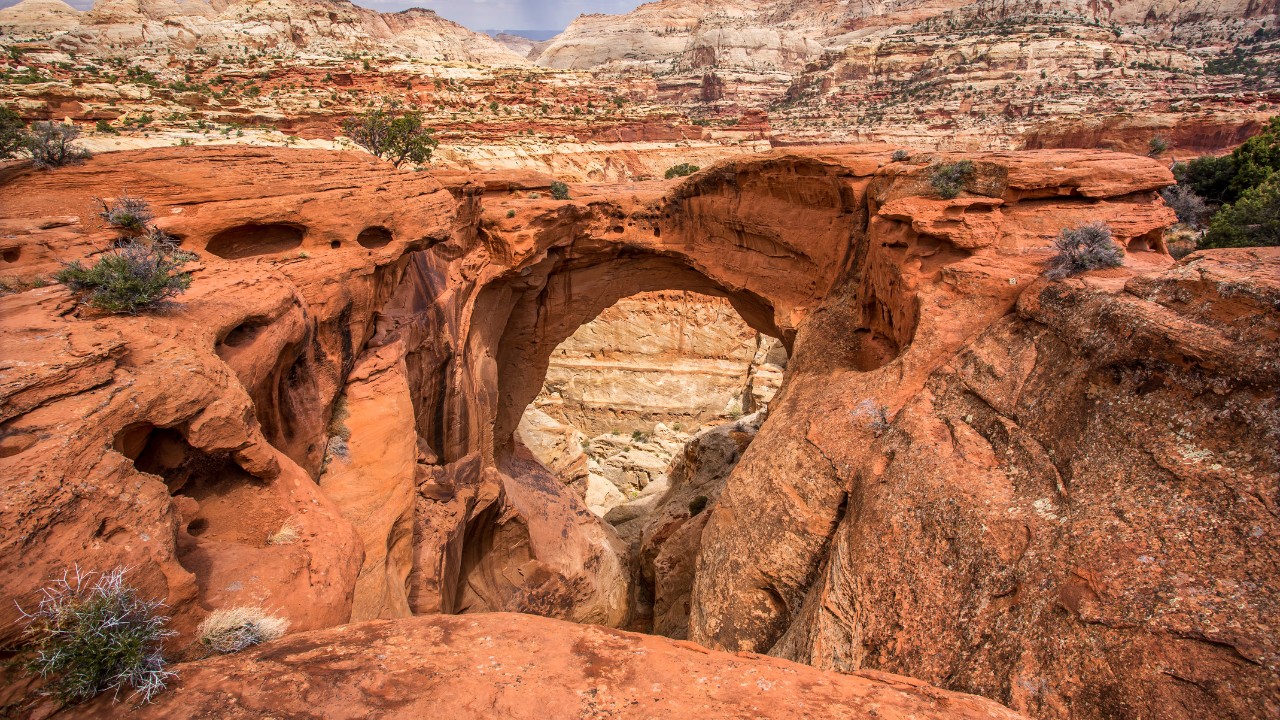
Capitol Reef National Park is one of the most underrated gems in the American Southwest as well as the entire Mighty 5 lineup in my opinion. With its colorful cliffs, deep canyons, hidden arches, and scenic byways, it offers a more peaceful, off-the-beaten-path alternative to the busier parks like Zion or Arches. If this is your first time visiting Capitol Reef, this guide will walk you through everything you need to know to plan the perfect adventure!
Overview
Capitol Reef National Park is located in south-central Utah and spans nearly 100 miles of rugged desert terrain. It’s known for the Waterpocket Fold, a massive geologic wrinkle in the Earth’s crust, as well as the historic Fruita district, which still has fruit orchards planted by early Mormon settlers. The park is ideal for hiking, scenic drives, stargazing, and exploring fascinating geological formations, all with fewer crowds.
- Location: South-central Utah
- Established: 1971
- Entrance Fee: $20 per vehicle (valid for 7 days)
- Open: Year-round
Photos
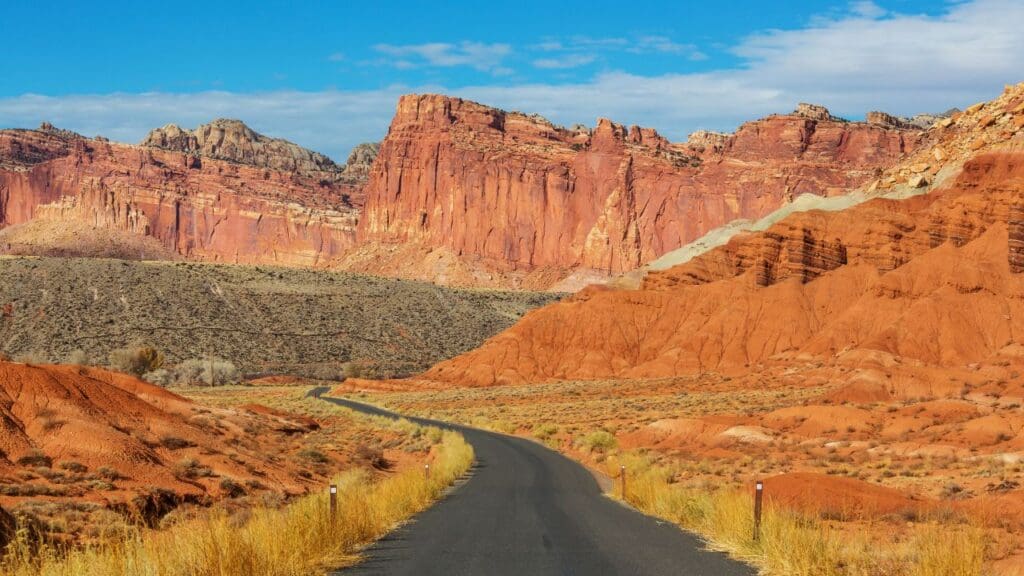
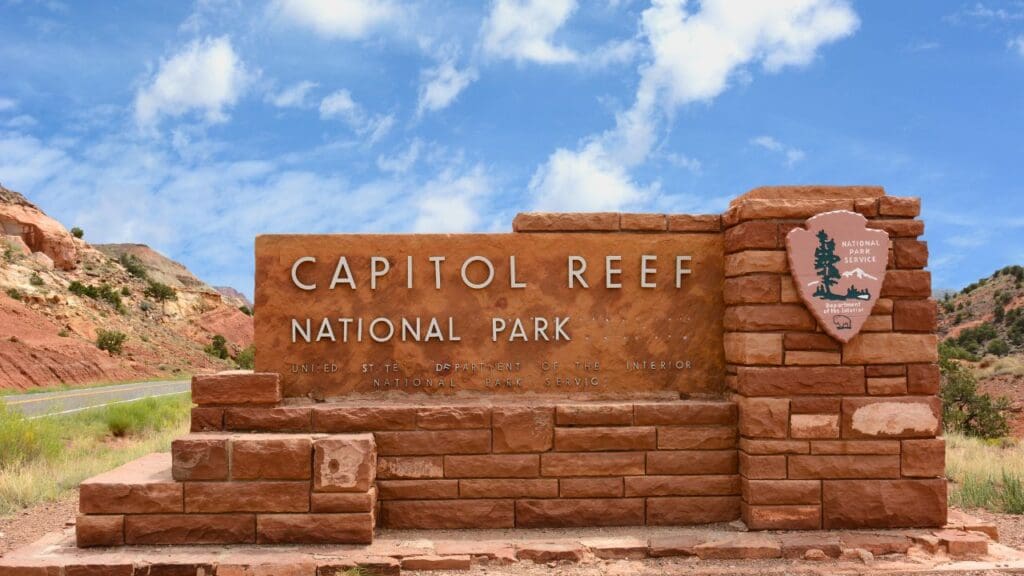

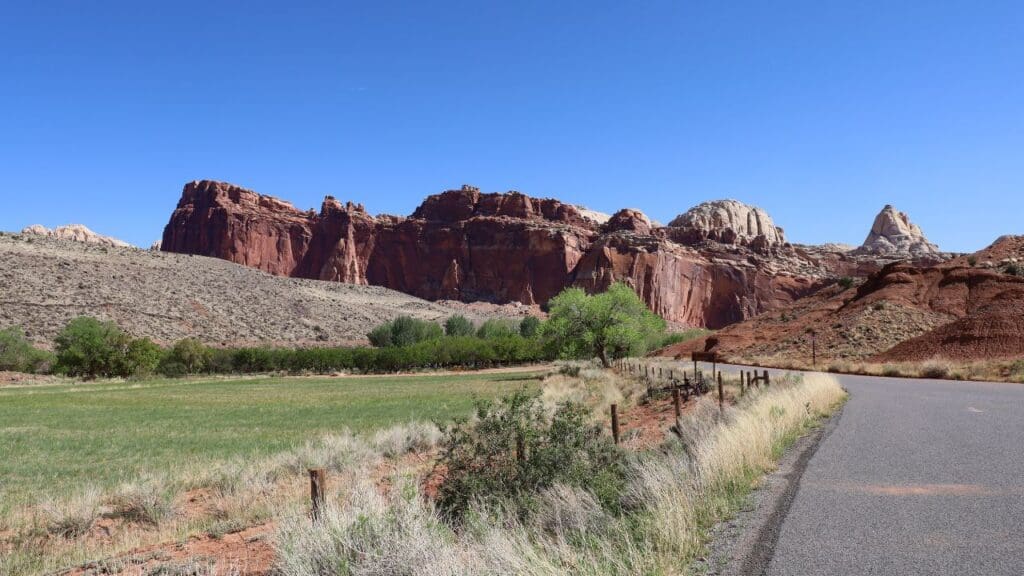
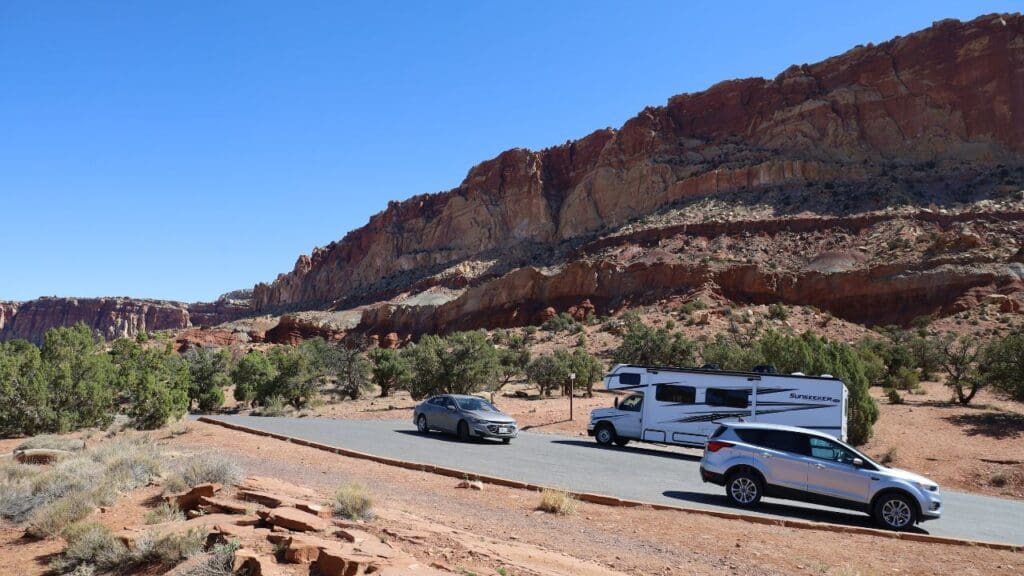
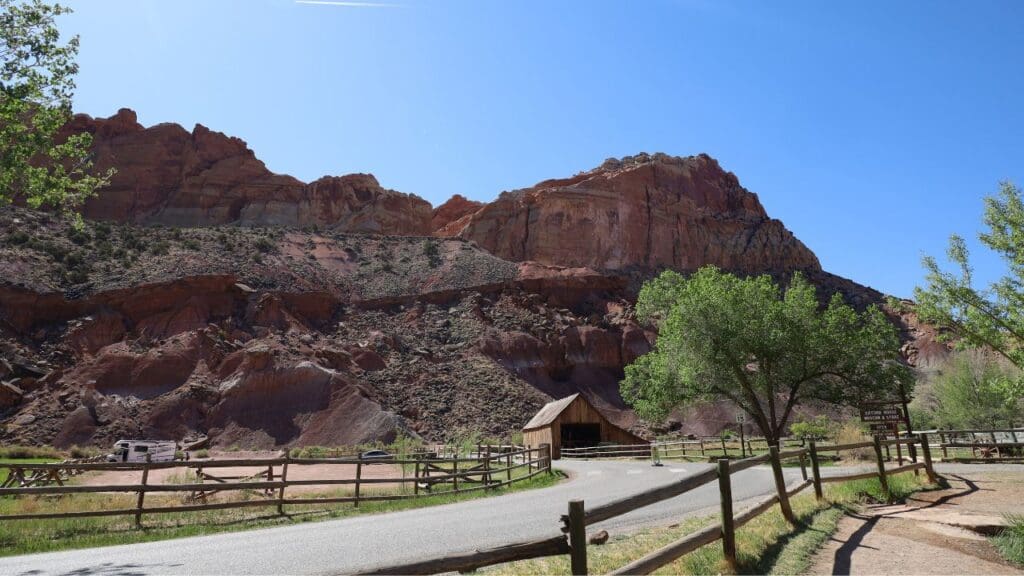
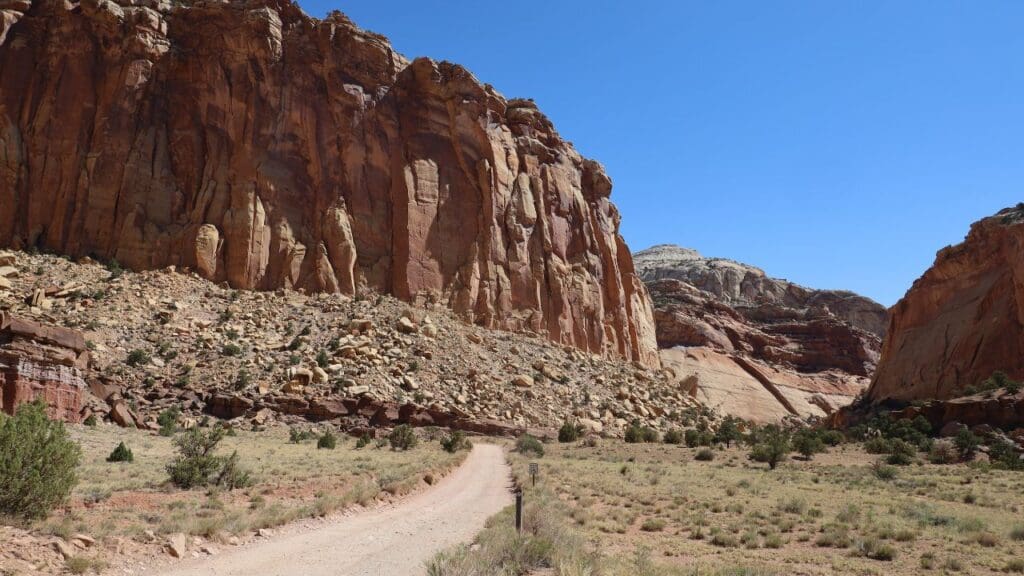
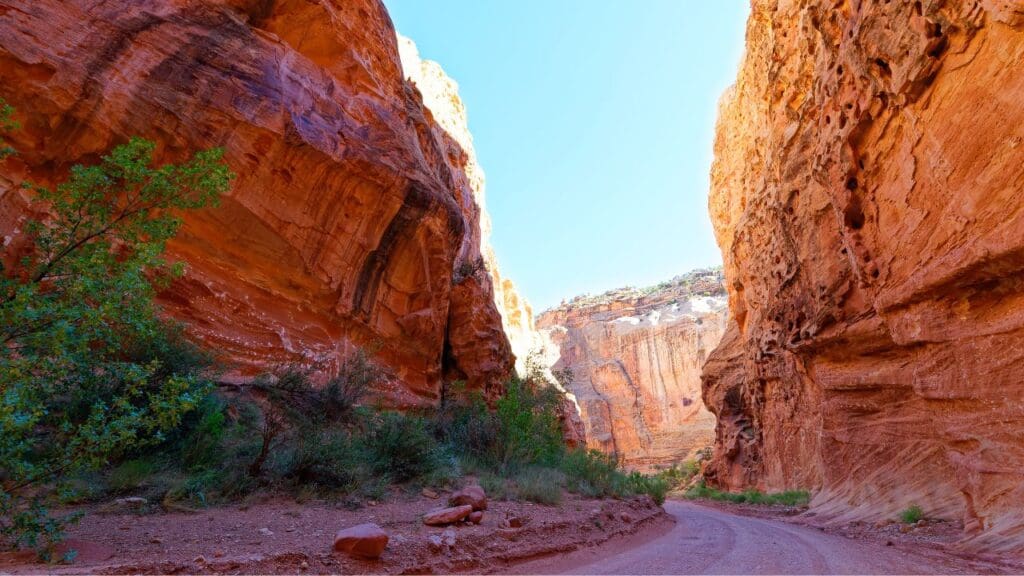
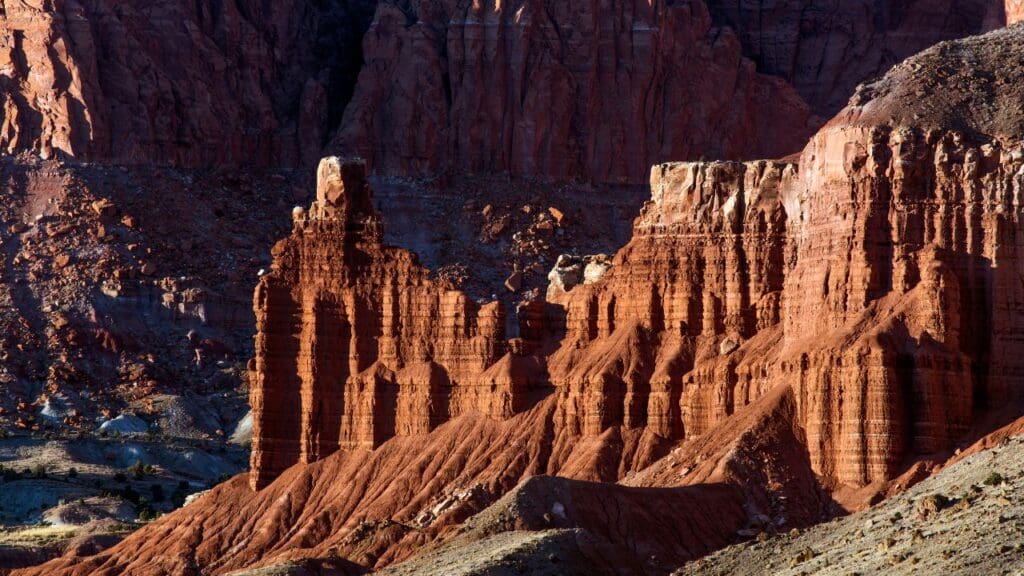



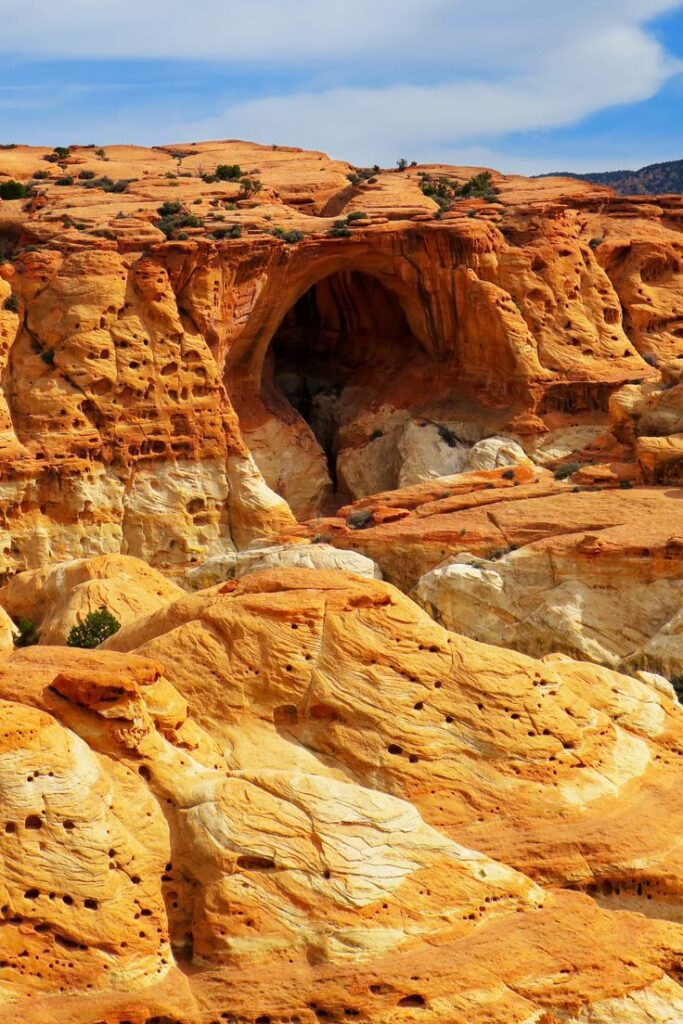
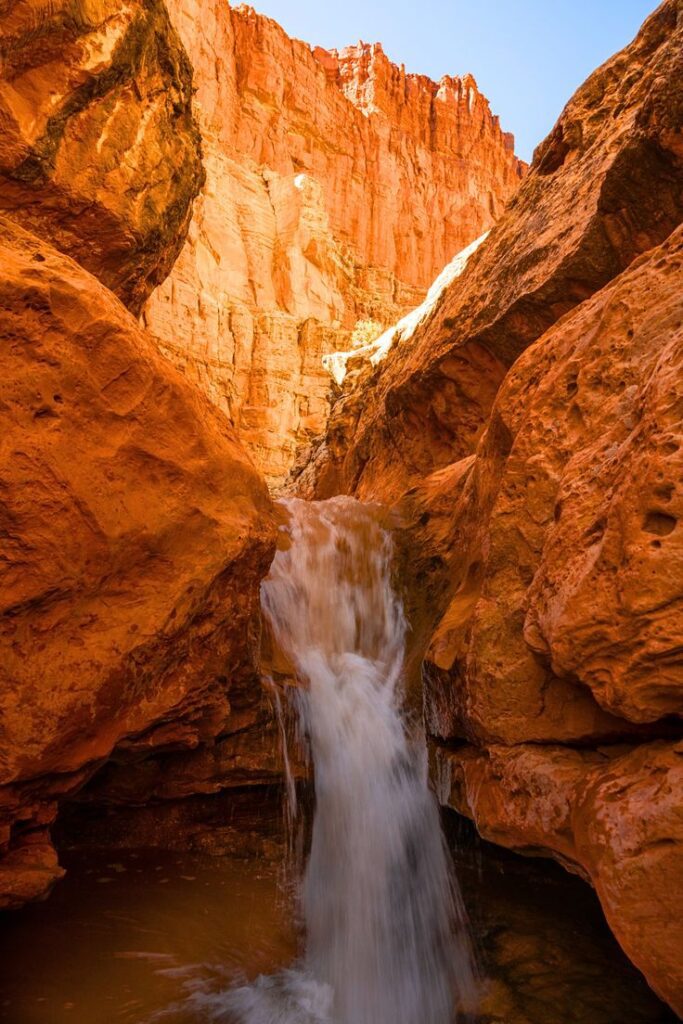
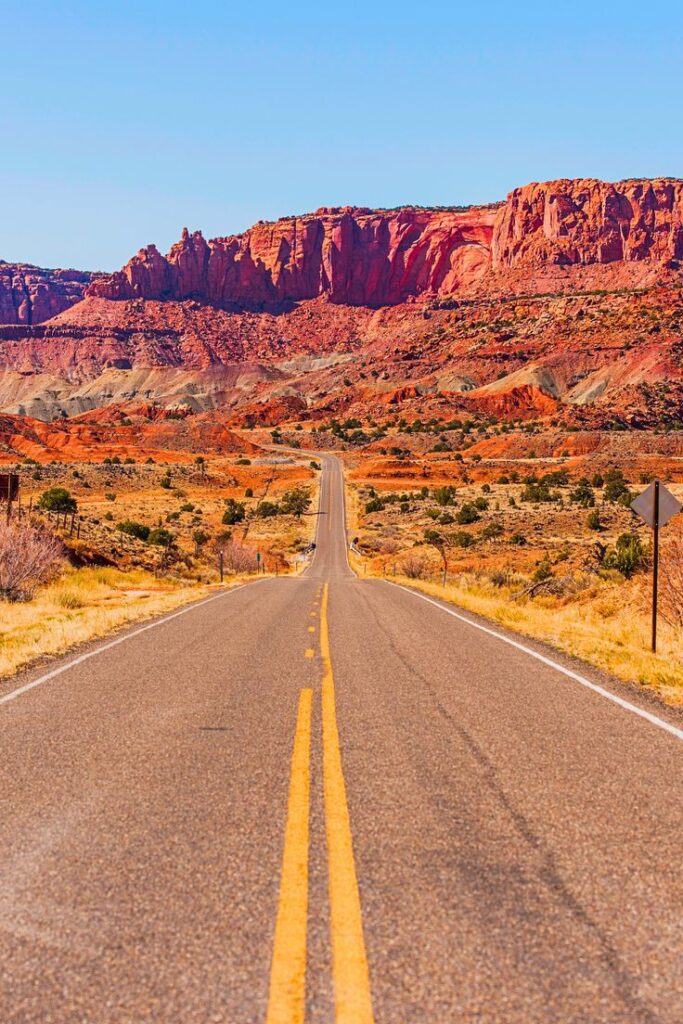
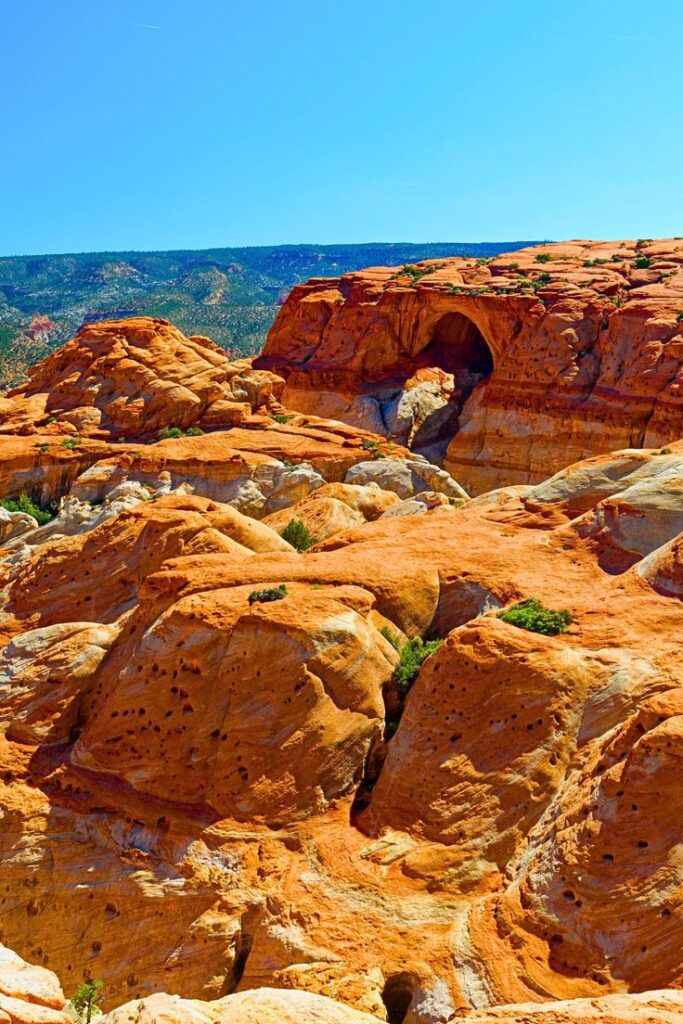

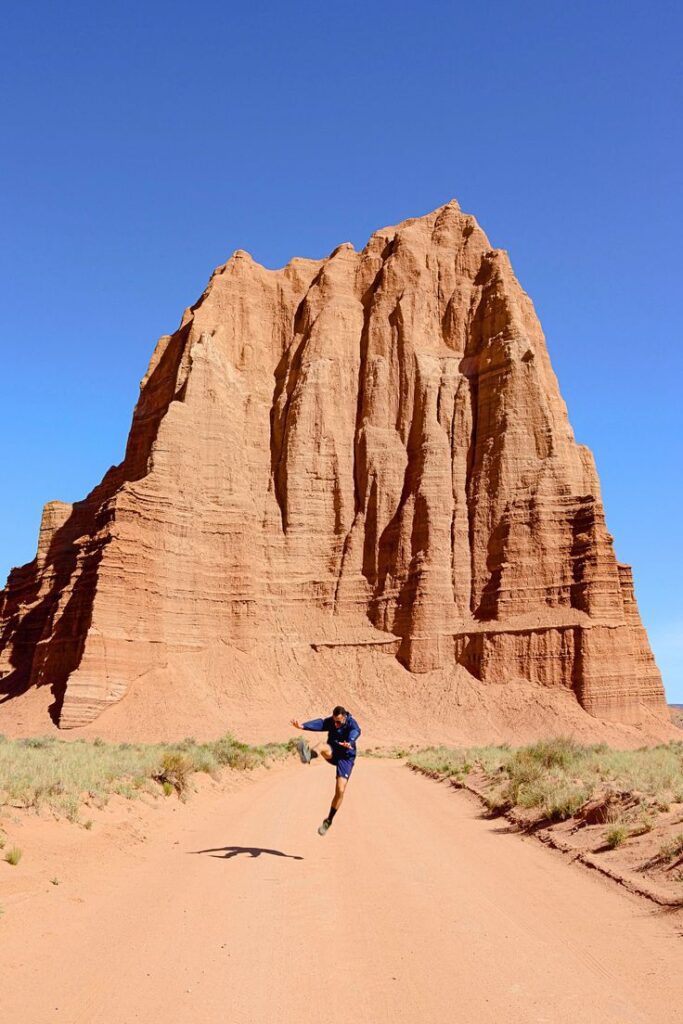
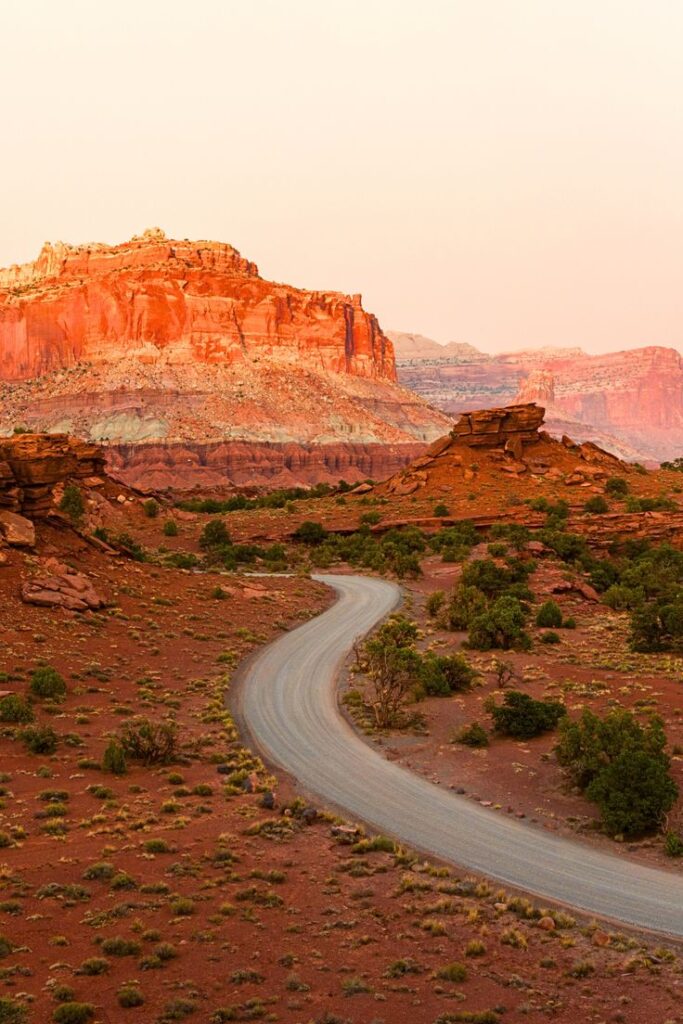
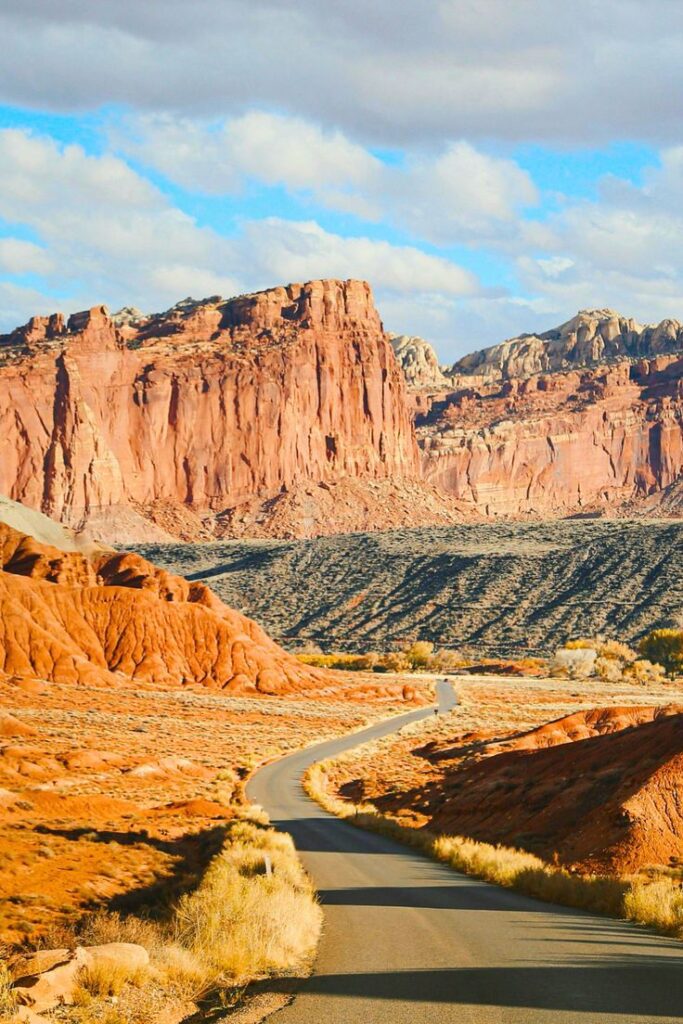
How to Get There
Capitol Reef is remote, but easily accessible by car. There is no airport nearby, so you’ll need to drive from one of the following cities:
- From Salt Lake City: About 3.5 hours (230 miles) via I-15 and UT-24
- From Moab: About 2.5 hours (145 miles) via UT-24 west
- From Bryce Canyon: About 2.5 hours (120 miles) via UT-12 (a scenic route)
Best Times to Visit
The best times to visit Capitol Reef are spring (April to June) and fall (September to October), when temperatures are comfortable and crowds are light.
- Spring: Wildflowers bloom, trails are clear, perfect for hiking.
- Fall: Cooler weather and colorful foliage in Fruita’s orchards.
- Summer: Can be extremely hot; come prepared for sun exposure.
- Winter: Quiet and peaceful, but some roads and trails may be snow-covered.
10 Best Things to Do
- Scenic Drive – A must-do 8-mile paved route through the heart of Capitol Reef’s canyons and cliffs.
- Hike to Cassidy Arch – A 3.4-mile trail to a natural arch you can walk across.
- Explore Capitol Gorge – Easy canyon hike featuring pioneer carvings and rock formations.
- Visit Fruita Historic District – Home to historic buildings and fruit orchards you can pick from in season.
- Panorama Point & Goosenecks Overlook – Short walks to incredible views.
- Hike Hickman Bridge – A moderate 1.8-mile trail to a large natural bridge.
- Try Sulphur Creek Trail – A water hike that involves wading through a narrow canyon.
- See Petroglyph Panels – Ancient rock carvings left by the Fremont culture.
- Camp Under the Stars – Capitol Reef is a certified Dark Sky Park.
- Visit the Gifford House – Grab a homemade pie or local jam in a historic setting.
On top of this list, I also recommend this Tripadvisor page on Capitol Reef for even more amazing recommendations from top visitor recommendations!
5 Hidden Gems
- Bentonite Hills – Colorful badlands that look like a Martian landscape.
- Temples of the Sun and Moon (Cathedral Valley) – Striking rock formations in a remote section of the park.
- Upper Muley Twist Canyon – A challenging hike with incredible views and natural arches.
- Headquarters Canyon – A little-known slot canyon in the southern Waterpocket Fold.
- Fruita Petroglyphs – Easily missed roadside stop with ancient rock art.
1–5 Day Sample Itinerary
Day 1:
- Arrive and explore Fruita District
- Stop at Gifford House
- Hike Hickman Bridge
- Watch sunset at Panorama Point
Day 2:
- Morning hike to Cassidy Arch
- Scenic Drive through Capitol Reef
- Explore Capitol Gorge Trail
- Stargazing at the end of the day
Day 3:
- Day trip to Cathedral Valley (requires high-clearance vehicle)
- Visit Temples of the Sun and Moon
- Optional overnight camping
Day 4:
- Hike Sulphur Creek or Upper Muley Twist
- Stop at petroglyph panels
- Relax in Fruita
Day 5:
- Visit Bentonite Hills at sunrise
- Picnic under the cottonwood trees
- Drive out via Scenic Byway 12 toward Bryce Canyon or Escalante
Packing List
You can get the majority of the items on this list from my Amazon gear store:
- Reusable water bottles or hydration packs
- Sun protection: hat, sunscreen, sunglasses
- Sturdy hiking shoes or boots
- Trekking poles for uneven terrain
- Lightweight clothing and layers
- Entrance fee or an America the Beautiful Pass
- Headlamp or flashlight for stargazing
- Binoculars and camera
- Paper map (limited cell service)
- Snacks or picnic food
Where to Stay
Check closest hotels near Capitol Reef
Things to Know Before You Go
- Cell Service is Limited: Download offline maps in advance.
- Gas and Supplies: Stock up in Torrey, services inside the park are minimal.
- Check Road Conditions: Some areas, like Cathedral Valley, require 4WD and may be impassable after rain.
- Weather Can Change Quickly: Always check the forecast, especially in summer when flash floods are possible.
- Fruit Picking: Allowed in season in Fruita orchards, bring a bag and enjoy!
- National Park pass: Either a pass at the entrance or getting an America the Beautiful Pass is suggested (if visiting multiple parks).
Related
Final Thoughts
Capitol Reef National Park offers a quieter, more intimate national park experience filled with dramatic landscapes, fascinating history, and hidden surprises around every corner. Whether you’re spending a day or a full week, the park rewards those who take the time to explore beyond the main roads. This guide gives you the tools to start your journey, now all you have to do is hit the road.
